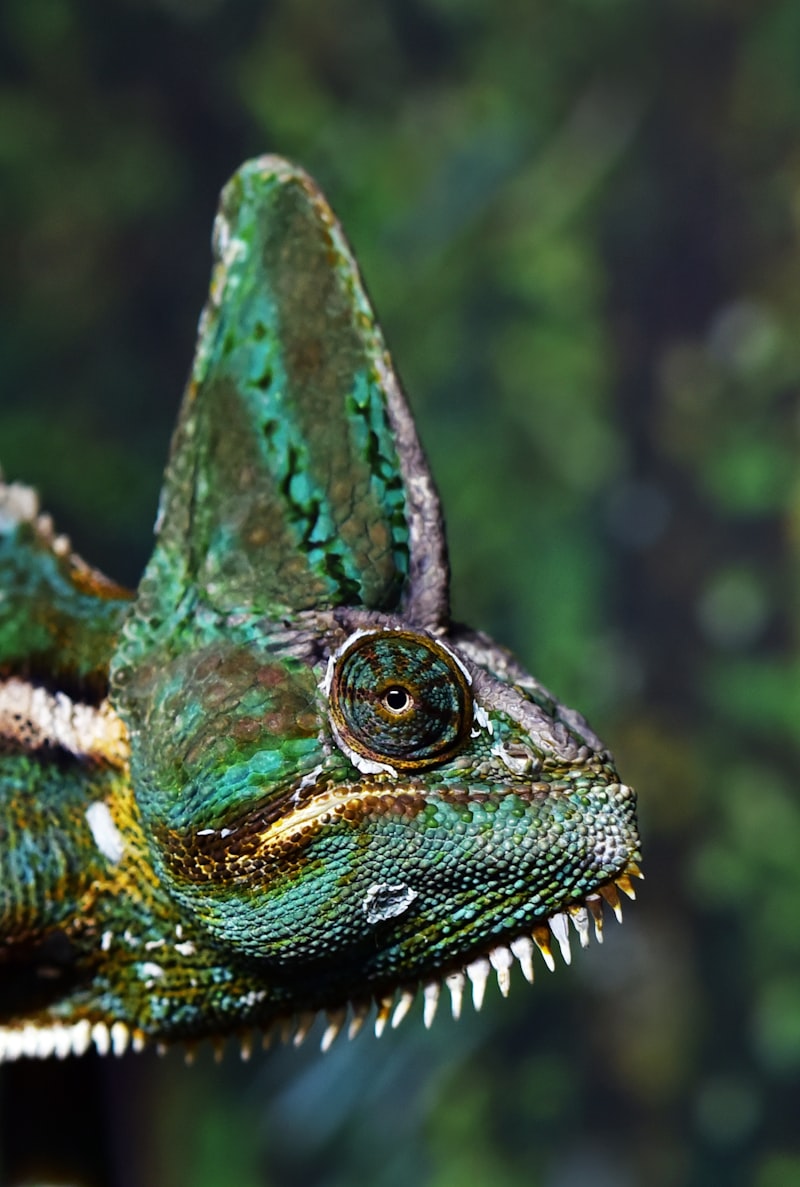Ever wondered how reptiles develop from eggs into fascinating creatures? The developmental biology of reptiles offers a glimpse into this intricate process. Unlike mammals, reptiles undergo external fertilization, where the female lays eggs fertilized by the male’s sperm. These eggs have a tough shell that protects the developing embryo from the external environment, ensuring their survival.
The journey begins when the egg is laid, typically in a warm, sheltered environment. This environment is crucial as it influences the development of the embryo inside. Reptile embryos undergo a process known as embryogenesis, where cells divide and differentiate into specialized tissues and organs. This process is guided by genetic instructions encoded within their DNA.
Temperature plays a critical role in reptile development. Unlike mammals, which regulate their internal body temperature, reptiles rely on external sources to maintain their warmth. This dependence on ambient temperature can significantly impact the development of the embryo. For example, some reptile species exhibit temperature-dependent sex determination, where the temperature during a critical period of embryonic development determines the sex of the offspring.

As the embryo develops, it forms structures like the amnion and chorion, which protect and nourish the growing embryo within the egg. The yolk sac provides essential nutrients, while the amniotic fluid cushions and supports the developing embryo. These adaptations ensure that even in challenging environments, reptile embryos have the best chance of survival.
The developmental biology of reptiles is a marvel of adaptation and survival. From the moment an egg is laid to the emergence of a fully formed hatchling, every stage is finely tuned to the environment in which it develops. Understanding these processes not only sheds light on the evolution of reptiles but also underscores their resilience in diverse habitats worldwide.
Unlocking the Mysteries: How Reptile Embryos Develop Unique Scales
Ever wondered how reptiles, with their intricate scales, develop such unique patterns and textures even before they hatch? The journey of scale development in reptile embryos is a fascinating process that begins early in their development stages.
Reptiles, ranging from snakes to lizards, undergo a remarkable transformation inside their eggs. The formation of scales starts during the embryonic phase when specialized cells begin to differentiate. These cells, called ectodermal cells, play a crucial role in the development of the skin and its appendages, including scales.
As the embryo grows, these ectodermal cells start to organize themselves into distinct patterns, guided by genetic instructions inherent to each species. This genetic blueprint determines not only the size and shape of the scales but also their arrangement across the body of the reptile.

The development of scales is not merely a passive process but a dynamic one. It involves intricate interactions between genetic factors and environmental influences. Factors such as temperature and humidity inside the egg can also affect how scales develop, adding another layer of complexity to the process.
Imagine it as a painter meticulously creating a masterpiece on canvas. Each scale on a reptile’s body is like a stroke of the brush, contributing to the overall beauty and functionality of the animal. Just as an artist selects colors and techniques, nature selects genetic variations and environmental cues to shape these scales uniquely for each species.
From the armored plates of a crocodile to the iridescent scales of a chameleon, the diversity in reptilian scales is a testament to nature’s creativity and adaptation. These scales not only provide protection against predators but also help in regulating body temperature and conserving moisture, crucial for survival in various habitats.
From Egg to Hatchling: The Fascinating Journey of Reptilian Development
Ever wondered about the miraculous transformation from a seemingly simple egg to a lively hatchling in the reptile world? Brace yourself for an incredible journey through the stages of reptilian development!
First things first, let’s talk about the beginning: the egg. Unlike mammals, reptiles lay eggs outside their bodies. These eggs aren’t just ordinary; they are designed to protect and nurture the growing embryo inside. It’s like a mini fortress, keeping the embryo safe from harm while providing the essential nutrients it needs to grow.
Inside this protective shell, magic unfolds. The embryo begins as a single cell, but through the wonders of nature, it rapidly divides and forms layers. These layers eventually give rise to vital organs, bones, muscles, and everything else needed for life outside the egg.
As time passes, the embryo undergoes a series of incredible transformations. One of the most critical stages is when the embryo develops a system to breathe while still inside the egg. Imagine preparing yourself for a journey without stepping outside your home – that’s how smart these little reptiles are!
As development progresses, the embryo starts to resemble its future self more and more. Tiny limbs develop, scales form, and distinct features begin to emerge. It’s like watching an artist create a masterpiece, stroke by stroke.
Finally, the big day arrives – hatching! This momentous event isn’t just about breaking free from the egg; it’s a testament to resilience and survival. The hatchling emerges, often exhausted but ready to take on the world. From the moment it breaks free, instincts kick in, guiding it towards food, warmth, and safety.
Evolutionary Insights: What Reptile Embryos Reveal About Ancient Lineages
Embryos hold secrets to the past, offering a window into the evolutionary tapestry of reptiles. Imagine peering into a tiny, developing reptile embryo – it’s like deciphering an ancient manuscript written in the language of genes. These embryos, from scaly snakes to armored turtles, carry echoes of their prehistoric ancestors, painting a vivid picture of evolutionary history.
In the labyrinth of reptile embryonic development, each stage whispers tales of adaptation and survival. Take the leatherback sea turtle, whose embryo showcases remnants of its distant marine ancestors. Its soft shell harkens back to an era when reptiles first ventured from sea to land. The embryo’s journey from aquatic beginnings to terrestrial life mirrors the evolutionary leap that shaped our planet.
Similarly, the crested gecko’s embryo unveils a mosaic of features inherited from its ancient lineage. From its adhesive toe pads, remnants of arboreal ancestors, to its delicate eggshell, every detail narrates a story of adaptation over millions of years. These insights not only fascinate scientists but also underscore the dynamic nature of evolution itself – a relentless sculptor of life forms.
Reptile embryos are not mere biological curiosities; they are time capsules of adaptation and resilience. They challenge us to ponder over the enduring mysteries of life’s origins and transformations. What drives these tiny embryos to evolve into such diverse forms? How did environmental changes shape their development? These questions provoke a deeper understanding of our planet’s evolutionary saga.
The Role of Temperature: How Incubation Influences Reptile Growth Patterns
Temperature plays a pivotal role right from the moment the egg is laid. The environment surrounding the egg dictates the rate at which the embryo develops, impacting everything from metabolic processes to the eventual size and health of the hatchling. This phenomenon, known as temperature-dependent sex determination (TSD) in some reptile species, underscores how sensitive these creatures are to their surroundings.
Consider the scenario of a clutch of turtle eggs buried beneath a sandy nest on a warm beach. The steady warmth from the sun penetrates the sand, maintaining a consistently higher temperature within the nest. This warmth accelerates the metabolic rate of the developing embryos, potentially resulting in faster growth rates and earlier hatching times. Conversely, cooler temperatures might slow down development, leading to smaller hatchlings that require more time to reach maturity.
Furthermore, the influence of temperature extends beyond mere size. It can affect a reptile’s behavior, physiology, and even its sex. In species where TSD is prevalent, such as many turtles and some lizards, specific temperature thresholds during incubation determine whether the hatchlings will be male or female. This temperature-dependent sex determination adds another layer of complexity to the role temperature plays in reptile development.
Understanding these dynamics is crucial for conservation efforts and captive breeding programs aimed at preserving endangered reptile species. By meticulously controlling incubation temperatures, conservationists can potentially skew sex ratios towards females or males as needed, contributing to the long-term sustainability of these species in the wild.
Frequently Asked Questions
What are the key differences in embryonic development between reptiles and mammals?
Learn about the fundamental differences in embryonic development between reptiles and mammals, focusing on key distinctions in egg type, fetal development, and reproductive strategies.
What are the stages of embryonic development in reptiles?
Learn about the stages of embryonic development in reptiles, from fertilization to hatching. Understand how reptile embryos form, grow, and develop distinct characteristics before emerging into hatchlings.
How does temperature affect the sex determination of reptiles?
Learn how temperature influences the sex determination of reptiles. This FAQ provides clear insights into how specific temperature ranges during egg incubation can determine whether reptiles develop as males or females.
How do reptiles reproduce and care for their young?
Learn about how reptiles reproduce and care for their young. Discover the various methods of reproduction, including egg-laying and live birth, and understand the unique parental behaviors exhibited by different reptile species to ensure the survival and development of their offspring.
What adaptations in embryonic development enable reptiles to thrive in diverse environments?
Adaptations in reptilian embryonic development allow them to thrive in diverse environments. These include the ability to develop externally, which protects embryos and allows for varied nesting sites. Additionally, their amniotic egg provides protection and enables reproduction away from water, crucial for survival in terrestrial habitats.



